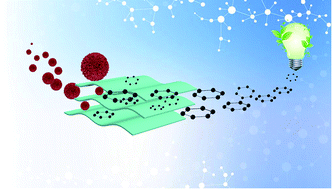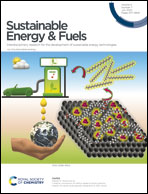Dual-functional Ti3C2Tx MXene for wastewater treatment and electrochemical energy storage†
Abstract
Multifunctional 2D materials have been exploited for highly intricate applications in engineering and medicine, including energy, bioimaging and drug delivery. In this study, an MXene material, Ti3C2Tx, was developed to play dual functional roles in wastewater treatment and electrochemical energy storage. First, Ti3C2Tx MXene demonstrated its high capacity for the adsorption of selected cationic dyes such as Rhodamine B in aqueous solutions. Meanwhile, both XPS and Raman spectroscopy indicated that Ti3C2Tx hosted the organic dyes in its interlayer voids through intercalation. After the in situ carbonization, conversion of the organic dyes to carbon led to the formation of novel carbon-filled Ti3C2Tx (Ti3C2Tx/C) for electrochemical applications. With the increased interlayer thickness of carbon within Ti3C2Tx/C, the carbon-filled Ti3C2Tx hetero-structure was eventually applied as a supercapacitor electrode; it displayed a high specific capacity of 226 F g−1 at 1 A g−1. Our unique approach of cationic dye adsorption/carbonization significantly enhanced the transport paths of electrolyte ions into the MXene, i.e. it exhibited high performance and cycling stability, with 94% retention over 8000 cycles. Our study paves the way to achieve scalable and environmental friendly processes for the development of high-performance 2D nanomaterials for energy storage.



 Please wait while we load your content...
Please wait while we load your content...